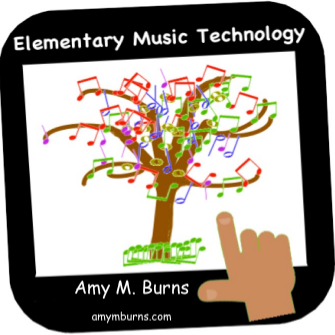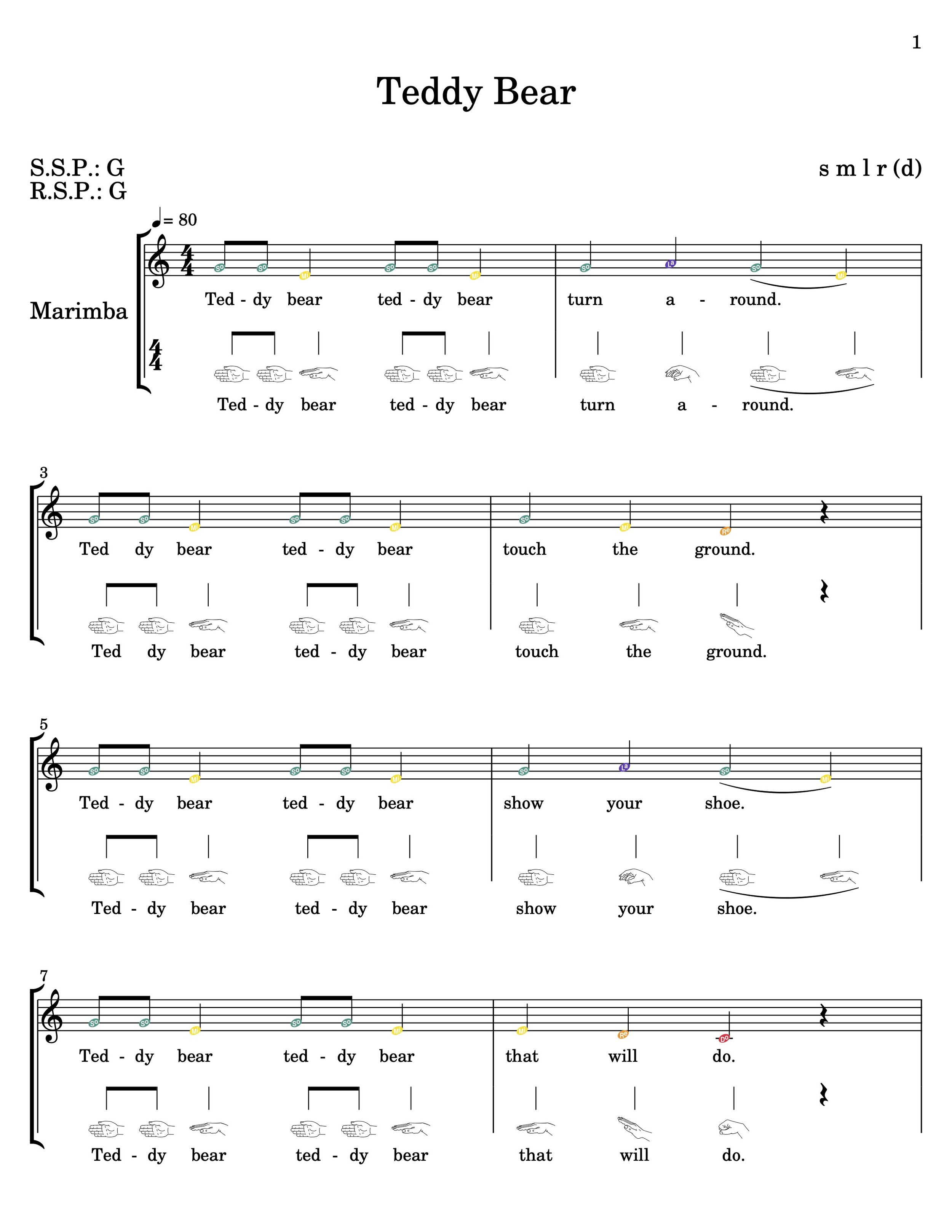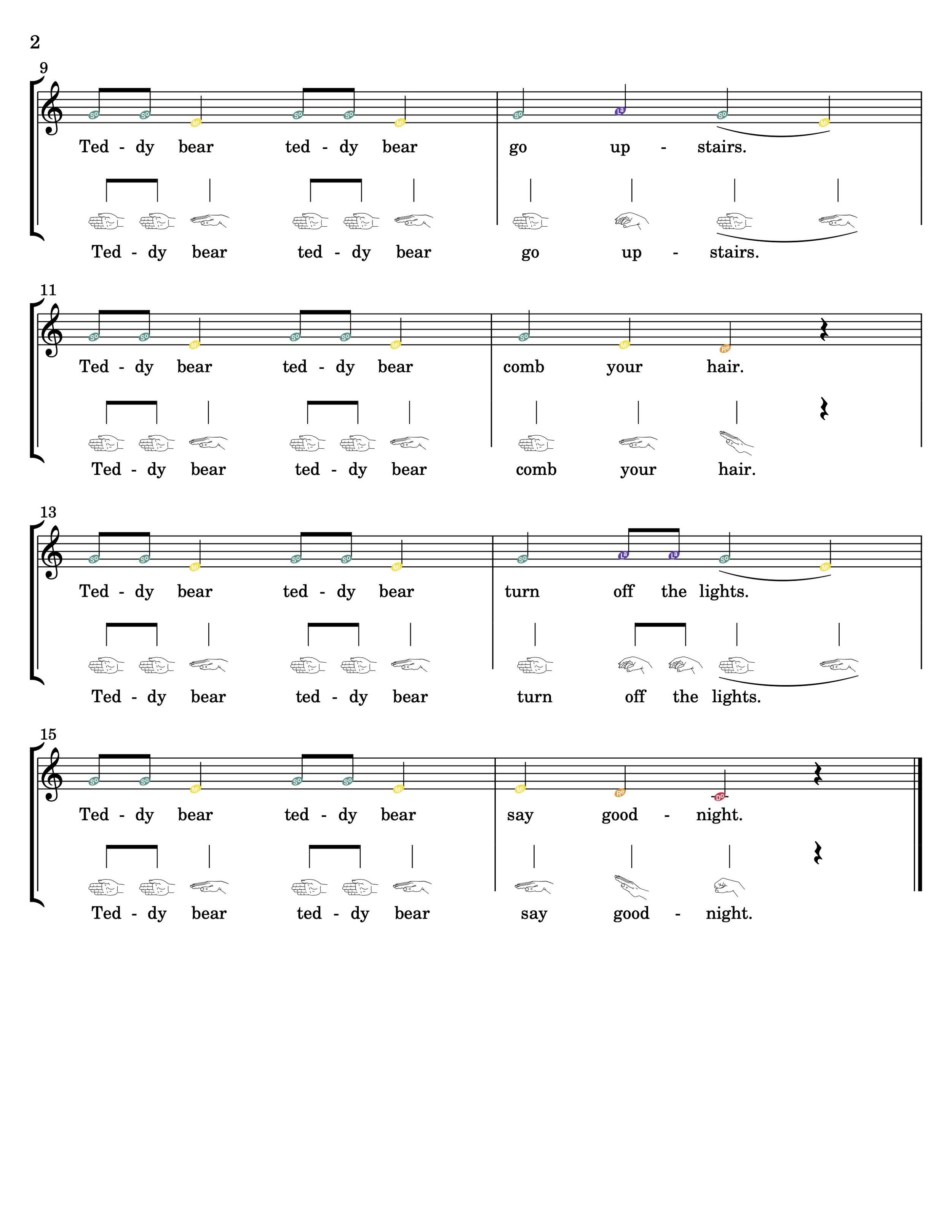Teddy Bear Play-Along Video and Manipulatives
This is the third installment of my summer project of creating play-along videos of songs and concepts found in the Kodály and Orff Schulwerk approaches. This week, I feature the Teddy Bear Play-Along video to go with the retrieval practice worksheet that I posted earlier this week.
Each video (found on my YouTube page) will be accompanied by lesson manipulatives. The lesson manipulatives can be found on my Teachers Pay Teachers page starting in July. Up until then, you can have them for free (as seen below). This gives you the opportunity to use the video for free to work well with your classroom approach or purchase the lesson that goes along with the video on my TPT page. Either way, the videos are free to use in your classroom.
Teddy Bear (meter of 4, quarter/eighth/half notes and quarter rests, s-m-l-d-r tonal pattern)
The third play-along video is “Teddy Bear” and the lesson is included in this blog. Teddy Bear is a traditional melody that includes a movement activity and a retrieval practice worksheet or Seesaw Activity. It focuses on the sol-mi-la-do-re tonal pattern and the rhythm values are quarter, half, and eighth notes in a duple meter.
The accompaniment is simple as it is just a melody line and a bass line of a separated bordun of Do and Sol and Sol and Sol, (do sol do sol do sol sol, sol do sol do sol do sol do__). The melody line is introduced first, followed by the bass line, and finished with both lines performed together.
Melody
I have performed this activity and song with Kindergarten and above. Even my older elementary will beg to grab a beanie baby and perform this song and activity again. To begin, we warm up with call and response patterns of sol, mi, la, do, re, and sol, (optional sol,). If the hand signals are being introduced by transferring body percussion to hand signals, then we convert sol by tapping the head, mi by tapping the shoulders, la by tapping the air above our heads, do by tapping the waist, and re by tapping the ribs and then converting them to hand signals. We transfer that to the mi-sol-la-do-re-low sol hand signals.
These hand signals were found as a member of Midnight Music.
We then learn the melody. As with Lemonade and Doggie, Doggie, I teach it by call and response on solfege using the hand signals. We increase the call and response to two phrases at a time, and then to the whole melody of verse 1. We do the same for verse 2.
Movement Activity
To reinforce the lyrics, we use our beanie babies, teddy bears, objects, beat buddies, etc. to perform the actions sung in the melody of the song. I also emphasize the melodic direction by having their teddy bears perform their movements to the melodic direction of the melody.
These are the movements we have used, but you can adapt them to what works best for your students:
Perform the Activity:
Give each child a stuffy or object or have them bring in their own teddy bear.
Go over the motions:
turn around
touch the ground
show your shoe
that will do (wag finger)
go upstairs
comb your hair
turn off the light
say goodnight
Pretend to go to sleep with the object, stuffy, or teddy bear.
Performing the Melody on Boomwhackers and Xylophones
I love using Flat.io (education version) to create the visuals because you can create Kodály rhythm stick notation under the staff notation. And, you can include boomwhacker colors. Flat.io is available from their website and from great music dealers like MusicFirst.
As with Lemonade and Doggie, Doggie, in the next class, we learn the melody of Teddy Bear. After reviewing the song on hand signals and then lyrics, we transfer sol to the right hand and mi to the left hand so that they tap the rhythm on their laps. When we get to la, depending on the skills of your students, I have them perform s-s m s-s m s l s m as r-r l r-r l r r r l. If your students are ready for a crossover pattern, you can teach them r-r l r-r l r l r l. This occurs again in the second line with the words, “touch the ground.” You can have them play the s m r (rest) pattern as r l l (rest) or the crossover pattern of r l r (rest). On the last line with the pattern of s-s m s-s m m r d (rest) you can choose to teach them with the sticking of r-r l r-r l l l l (rest), or r-r l r-r l l r l (rest).
If the students have trouble identifying left from right, which is normal, I give them a scrunchy or rubber band to put on their right wrist to help with this.
What If You Don’t Have Enough Instruments for Your Students?
That is where this lesson can be accomplished with xylophones, boomwhackers, tone chimes, tone bars, and virtual instruments. Since the melody has two pitches, you can supplement instruments that can play high and low, or the pitches of G and E, so that more students can perform. Virtual websites like Playxylo.com, my Scratch Boomwhackers site, and Dr. Musik’s website help when you might not have enough instruments, but you do have access to devices. This also helps students who cannot hold mallets in a traditional way so that they can make music alongside their classmates.
Bass Part
Very similar to Lemonade and Doggie, Doggie, during the next class, we will learn the bass part. I begin with the students performing the steady beat on their laps with both of their hands patting together. Then, I ask them to separate with the first steady beat being performed with their left hand tapping their left leg, then their right hand tapping their right leg, and alternating after that. If they have trouble with lefts and rights, I can give them a scrunchy. We then transfer that to the C (left hand) and G (right hand) bars on the xylophones. Again, this can also be played with higher-pitched xylophones, virtual instruments, tone chimes, tone bars, and boomwhackers.
They all play the alternating bordun (C G C G C G G, G C G C G C G C__ repeat), and I sing and play the melody on my instrument. To reinforce the G, G pattern, I will have them move in the melodic direction to help them feel when the Low G will come in during this long pattern.
BOTH PARTS
The next class brings both parts together as I review with the students how to play the melody and then the bass line. I divide the class in half and they play the parts together. If there are students without an instrument, they can perform the movement game and we switch throughout the class. We continue until all students have played the bass part, the melody, and the movement game.
RHYTHM
I did not approach the quarter and eighth note rhythm patterns in this lesson as I kept it focusing on singing, melody, pitches, and movement. However, the rhythm can be prepared in this lesson and presented with another song. Finally, it can be practiced via performing it on the instruments or creating their own B portion of the song Teddy Bear with the quarter and eighth notes.
Retrieval Practice
To reinforce the pitches, I created this retrieval practice that can be used as a station, a class activity, an interactive activity (especially if your students are using chromebooks and have Kami, or as a Seesaw Activity.
MANIPULATIVES
The manipulatives reinforce the lesson process as well as use the worksheet to master the pitches to the melody.
The manipulatives below are for the taking and include Google Slides, Seesaw Activity, and pdf files so that you can download and use them in the way that works best for your class.
Google slides: https://docs.google.com/presentation/d/1LldvmYhLRDJAxvrWLGtPfx9d8VJPrKlvEbm8J5D5Esw/copy
PDF: https://drive.google.com/file/d/1R1qpKhXkUElPSheR16VhIdqVksMuvgmJ/view?usp=sharing










